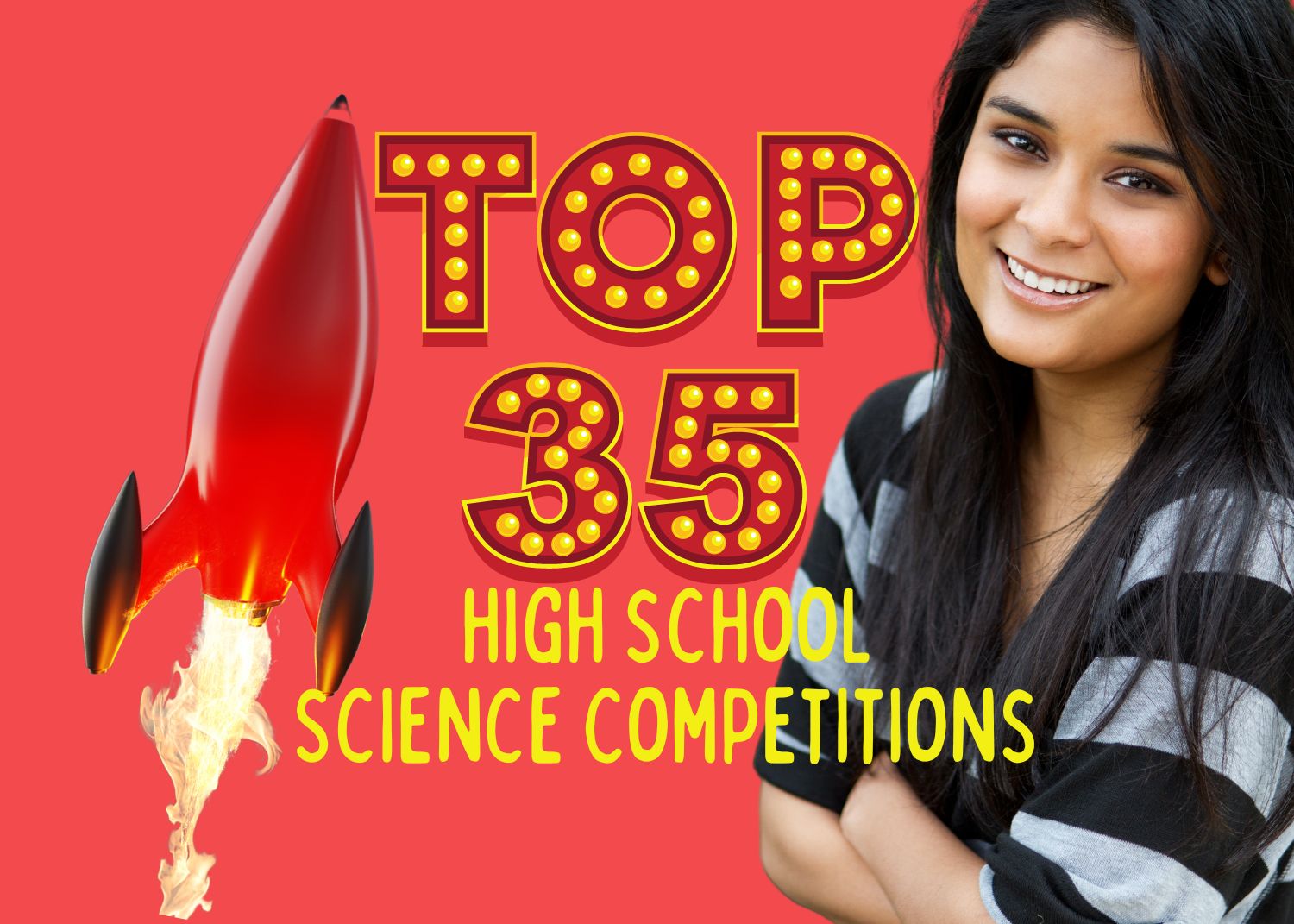35 Top Science Competitions for High School Students
If you love science — or even if you’re just curious and want to explore STEM subjects — the best science competitions for high school students offer different and exciting ways for teens of all levels and interests to learn and shine!
Science Competitions for High School Students – More Than Just Science Fairs
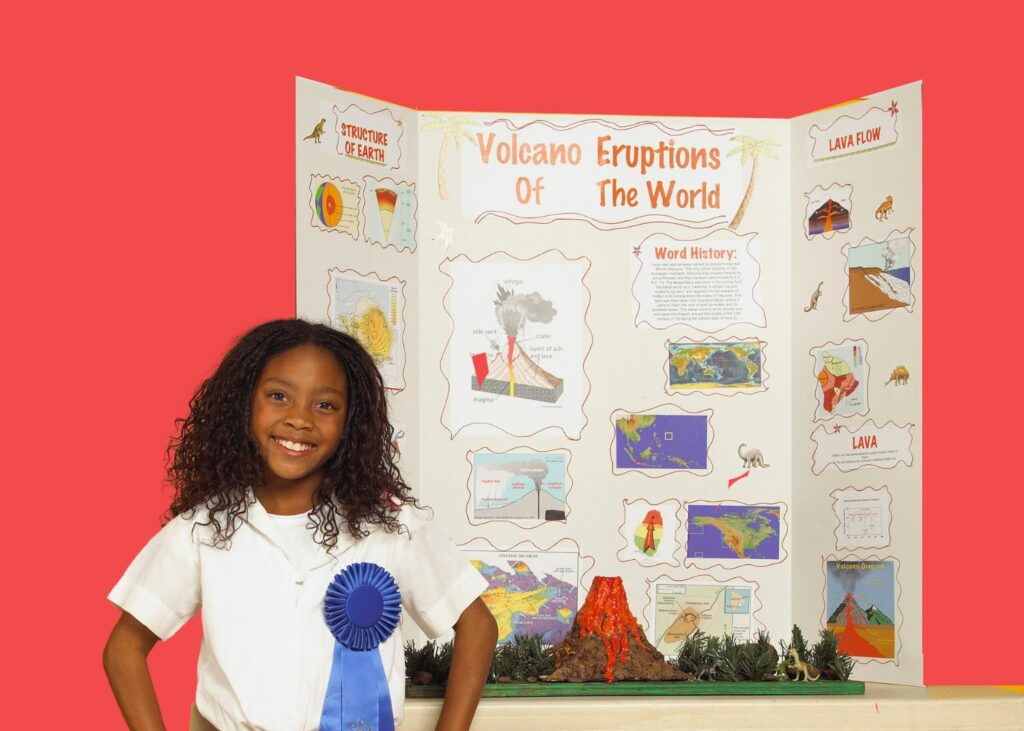
When you think of a science competition, your mind may bring up images of an elementary school science fair with play dough volcanos spewing baking soda and vinegar “lava” in school gymnasiums. In reality, high school science competitions are much more sophisticated, engaging, and fun than many students expect!
Science competitions for high school students come in many different forms, offering a wide range of opportunities to learn about STEM (science, technology, engineering, and math) subjects or to showcase STEM skills you already have. Whether you love the classic science fair, want to focus on a specific STEM subject, or are looking for an opportunity to innovate and make a real-world impact, there’s a science competition out there for you!
Don’t Be Intimidated by High School Science Competitions!
You don’t have to be a scientific genius to enter and win science competitions for high school students. Why?
First: There are science competitions for all levels of high school students and, as we explain below, there are many different kinds of competitions. In addition to the traditional “science fair” competition format, there are competitions (such as video, essay, innovation, and building competitions) for teens who may not be interested in doing scientific research. There are even competitions where you learn all the science you need along the way!
Second: While some elite, research-focused science competitions for high school students can be pretty intimidating, we’re going to let you in on a “secret” that most teens don’t know: the students who participate in those competitions get a lot (yes, a lot!) of help from professionals like teachers, scientists, and other mentors, and there are ways that YOU can get help, too!
How? There are many programs and other resources that help students do scientific research for science competitions. Many of these programs are free (or will even pay students to participate!) AND encourage students from underrepresented groups like Hispanic and Latino/x students to apply. These include science research and mentorship programs and STEM internships, all of which we feature in the Teen Resources section of Lateenz. Interested in learning more? We’ve written a whole article about how Hispanic and Latino/x (and other underrepresented) teens can enter and win science competitions for high school students.
The 6 Types of Science Competitions for High School Students
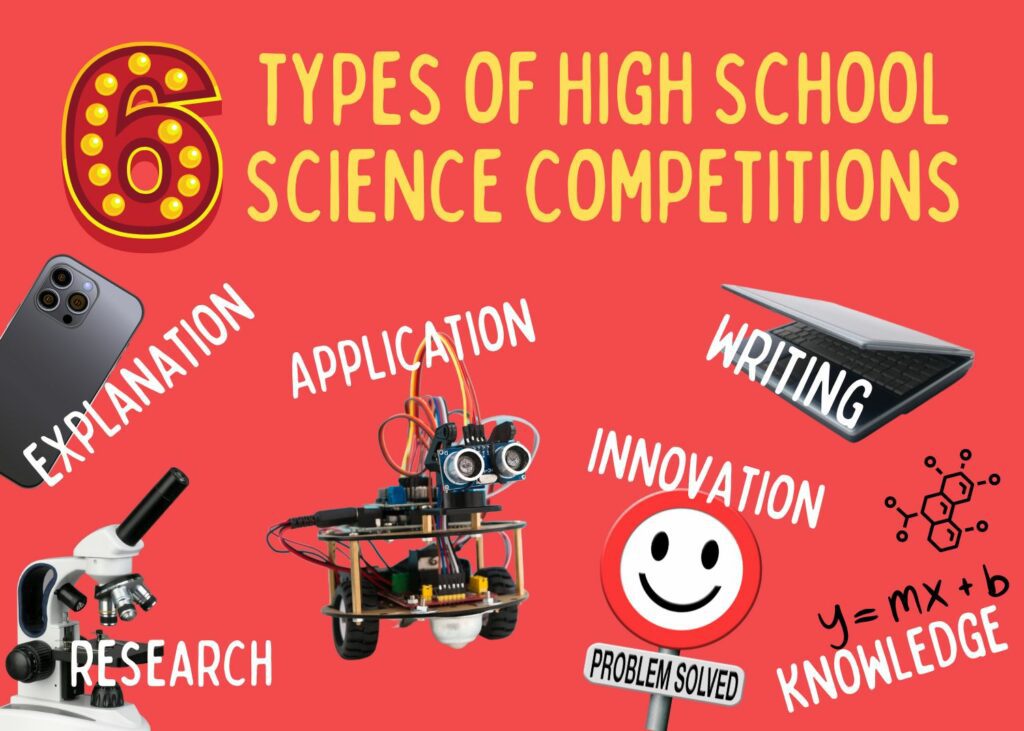
Science competitions for high school students can be grouped into six categories: (1) Explanation; (2) Research; (3) Knowledge; (4) Writing; (5) Application; and (6) Innovation.
Science Explanation Competitions. These competitions ask students to communicate a scientific concept in an interesting and accessible way, typically through a short video. The goal is for participating students to “learn by teaching” while also spreading their knowledge and enthusiasm for science with other teens.
Science Research Competitions. One of the most well-known types of science competitions for high school students is the science research competition. These competitions involve students using the scientific method to investigate a question of their choice about the natural world. (The scientific method is a systematic process that includes making observations, formulating a question or hypothesis, conducting research, analyzing data, and drawing conclusions.) Students then present their findings either in person (at a science fair, in the form of a project or display) or by submitting a research paper. Science research competitions are usually held at the local, regional, or state level and are organized by schools, science clubs, professional societies, or science industry organizations.
Science Knowledge Competitions. These competitions, also known as olympiads or bowls, are exam-based competitions designed to challenge students’ academic and technical knowledge of various STEM subjects, such as biology, chemistry, physics, or computer science. These competitions are held on a single day or weekend and, in addition to tests, can include a variety of events such as lab experiments and hands-on building activities. They are organized by state and national organizations and held at different levels, from invitational to regional, state, and national. In some cases, national winners go on to compete in international competitions.
Science Writing Competitions. These competitions ask students to explore and comment on an aspect of science’s role in society. Like other types of science competitions, students must understand the scientific principles behind what they are writing about, but they must also go further and analyze, critique, or advocate for an element of science based on how they think it affects the world.
Science Application Competitions. Applied science competitions offer students the chance to demonstrate their skill in the practical, real-world application of a STEM area – usually a form of engineering – such as computer programming, robotics, or rocketry. Because the topics of applied science competitions aren’t typically taught in high schools, these competitions usually involve a learning component guided by a teacher or other adult mentor who supervises a team of students. Applied science competitions are often organized as multi-level tournaments (similar to science knowledge competitions) where the winning teams at each level (regional and state) move on to compete for a national or international title.
Science Innovation Competitions. These competitions are designed to promote innovation and may take the form of hackathons, business plan competitions, or design challenges. The goal is for students to develop and present new ideas, prototypes, or business plans that have the potential to solve real-world problems such as environmental conservation, energy efficiency, or disease/disability.
35 Science Competitions for High School Students, 2023
Here are 35 examples of some of the best and most interesting science competitions for high school students in 2023 . . . plus, if you hang with us to the end, we’re featuring a special BONUS competition that we think is creative and fun. Don’t miss it!
Science Explanation Competitions
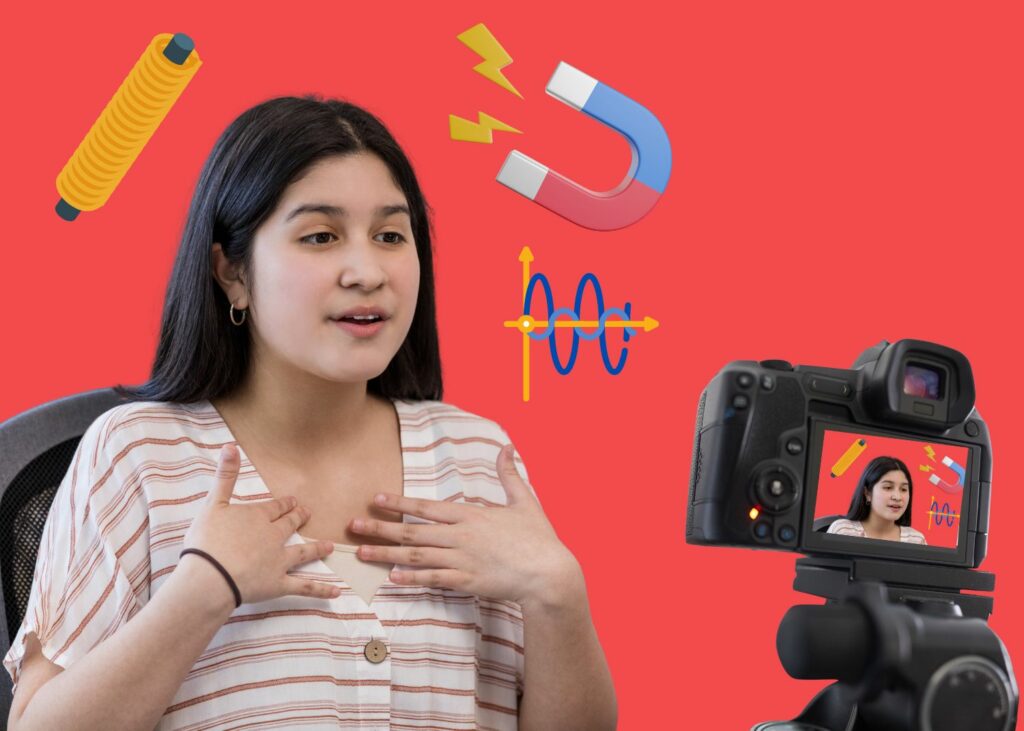
1. American Association of Physics Teachers: AAPT High School Physics Photo Contest
The AAPT High School Physics Photo Contest is an international science competition for high school students. Participants take photos or create picture illustrations of a physics concept or phenomenon and write an explanation. The contest is open to high school students in grades 9–12. Teachers must register for the competition online first, and then they receive instructions and a link to submit the names of the students who will be entering photos. There are two categories (natural photos and contrived photos). Both categories are judged on the quality of the photo and the accuracy of the physics in the explanation that accompanies the photograph. Awards for 1st-3rd place students include $50–$100 and certificates.
- Grades: 9, 10, 11, 12
- Focus: Photography, Physics, STEM
- Participation: Submission
2. American Psychological Association: TOPSS Competition for High School Psychology Students
The American Psychological Association: TOPSS Competition for High School Psychology Students invites students to submit a video (max. 3 minutes) showcasing their understanding of how the results of a published study they have learned about related to psychology have the potential to benefit their school/community and improve people’s lives. Submissions should cover a topic related to social psychology, personality, multiculturalism, gender, motivation, or emotion. Up to 3 winners will receive a $300 scholarship.
- Grades: 9, 10, 11, 12
- Focus: Film/Video, Psychology, STEM
- Participation: Submission
3. Breakthrough Junior Challenge
The Breakthrough Junior Challenge is an international science video contest for young people ages 13-18. Students are asked to explain an important scientific theory, concept, or principle in the fields of physics, mathematics, or life sciences by creating a short video (1 minute and 30 seconds max). One prize will be awarded to the winner of the contest, consisting of – are you ready for this? – (1) a $250,000 college scholarship; (2) $100,000 to the winner’s school for the renovation or addition of a science lab; and (3) $50,000 to a teacher selected by the winner. WOW!
- Grades: (Ages 13–18)
- Focus: Biology, Film/Video, Mathematics, Media, Physics, STEM
- Participation: Submission
4. National Eye Institute: Eye on the Future Teen Video Contest
The National Eye Institute: Eye on the Future Teen Video Contest is a video contest sponsored by The National Institutes of Health and is open to teens currently living in the U.S. Students are invited to create a video about why science is important in 1 of 3 categories: science in your world, science in the field or lab, or science in your future. Videos must be between 30 seconds and 3 minutes long. Submissions can be made by individuals or groups of up to 3 people. First-place winners in each category will receive $2,000 cash and a trip to the NIH campus in Bethesda, Maryland for a day of science, networking, and fun. Videos will be judged on scientific context and accuracy, relevance, engagement, creativity, and level of effort, with bonus points for videos that are eye-health or vision science related or that focus (pun intended!) on diversity, equity, inclusion, and accessibility. Submissions are encouraged from populations that are underrepresented in the U.S. biomedical, clinical, behavioral, and social sciences research enterprise, which includes individuals from racial and ethnic groups and/or those with disabilities and disadvantaged backgrounds.
- Grades: (Ages 13–19)
- Focus: Film/Video, STEM
- Outreach: Black, Disability, Economically Disadvantaged, Hispanic or Latino/x, Underrepresented
- Participation: Submission
Science Research Competitions
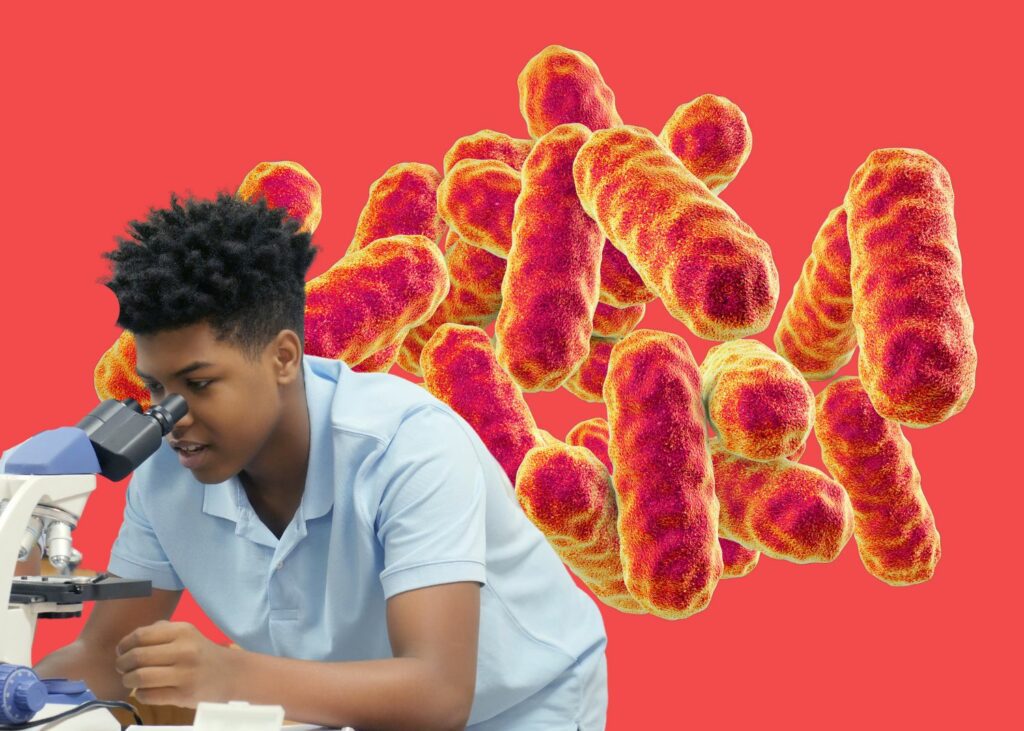
5. American Academy of Neurology – Neuroscience Research Prize
The American Academy of Neurology – Neuroscience Research Prize is an award designed to encourage high school students to do original research and help solve problems related to the brain and nervous system. To apply, students must submit a completed application form, a 300-word abstract, a research report, and a bibliography. Four winners receive a $1,000 prize, and three winners and their teachers get the opportunity to present their work at the AAN Annual Meeting in Boston, MA. One winner and their teacher will present their work at the 2023 Child Neurology Society Annual Meeting.
- Grades: 9, 10, 11, 12
- Focus: Biology, Biomedicine, Biotechnology, Medicine, STEM
- Participation: Submission
6. Biotechnology Institute: BioGENEius Challenge
The Biotechnology Institute: BioGENEius Challenge gives high school students the opportunity to compete and be recognized for outstanding research in biotechnology in one of three different categories: healthcare, agricultural sustainability, and environmental protection. Students begin by entering the At-Large or Local BioGENEius Challenges, depending on whether their state has a local challenge. Information on how and where to compete in each state is provided on the competition website.
- Grades: 9, 10, 11, 12
- Focus: Agriculture, Biomedicine, Biotechnology, Environment, Medicine, STEM
- Participation: In Person, Submission
7. Davidson Institute Fellows Scholarship
The Davidson Institute Fellows Scholarship is a science competition for high school students that awards scholarships of $50,000, $25,000, and $10,000 to high-achieving students who have completed a significant piece of work in categories such as science, technology, engineering, and mathematics. Eligible applicants must be 18 or younger as of the application deadline, be a U.S. citizen or permanent resident, and be able to attend the awards reception in September in Washington, D.C. Teams of two are allowed, and the scholarship money will be split evenly between team members. This competition is looking for students whose projects are at, or close to, the college graduate level with a depth of knowledge in their particular area of study.
- Grades: 9, 10, 11, 12 (must be 18 or younger)
- Focus: STEM
- Participation: Submission
8. Junior Science and Humanities Symposium National Competition
The Junior Science and Humanities Symposium (JSHS) National Competition (JSHS) is a multilevel (regional and national) competition where high school students (grades 9-12) present their STEM projects before a panel of judges and an audience of their peers. Students also get access to hands-on workshops, panel discussions, career exploration, research lab visits, and networking. Students compete in eight categories: Physical Sciences, Environmental Science, Biomedical Sciences, Mathematics & Computer Science, Medicine & Health/Behavioral Sciences, Engineering & Technology, Life Sciences, and Chemistry. The JSHS experience starts with a Regional Symposium. JSHS Regions cover all 50 United States, the District of Columbia, Puerto Rico, and Department of Defense Schools in Europe and the Pacific. Students are expected to compete in their home region. Winners at the regional level move on to the national competition. Prizes include recognition, scholarships, and connection to future research opportunities through other STEM programs and networks with university and industry professionals. Please note that only the students who are citizens or Lawful Permanent Residents (LPR) of the United States can receive the scholarship.
- Grades: 9, 10, 11, 12
- Focus: Biology, Biomedicine, Chemistry, Computer Science, Engineering, Environment, Geosciences, Mathematics, Medicine, Physics, STEM, Technology
- Participation: In Person, Submission
9. Massachusetts Institute of Technology: MIT THINK Scholars Program
The MIT THINK Scholars Program is a competition designed to motivate U.S. high school students to come up with a creative idea for a new STEM research project and then help the students complete the research. This competition is different from most research competitions because it doesn’t require students to have a finished project. Instead, this competition asks students to submit proposals for a new research project in any area of science, technology, or engineering. Selected finalists then get up to $1,000 to work on their projects and have weekly mentorship meetings with THINK team members for technical guidance, helpful resources, and progress updates. Finalists are also invited to a four-day all-expenses paid trip to MIT’s campus, where they tour labs, present their research to MIT students and faculty, and hang out with members of the THINK team. Finalists who successfully complete their projects are given the title of MIT THINK Scholars.
- Grades: 9, 10, 11, 12
- Focus: Engineering, Mentoring, Science, STEM, Technology
- Participation: In Person, Submission
10. NSPC Brain & Spine Surgery Health Science Competition
The NSPC Brain & Spine Surgery Health Science Competition is for 9th-12th grade students from Nassau/Suffolk Counties in New York. Teams of 1–3 students are eligible to participate by experimenting and testing any innovation in health science. The competition has two rounds. In Round One, teams submit a website with a digital poster, 8-minute video, abstract, etc. that is judged by regional medical professionals. In Round Two, the top 10 teams present their research in person to judges. $80,000 in score-based awards are available for students.
- Grades: 9, 10, 11, 12
- Focus: Biomedicine, Biotechnology, Healthcare, Medicine, STEM
- Participation: In Person, Submission
11. Regeneron International Science and Engineering Fair (ISEF)
The Regeneron International Science and Engineering Fair (ISEF) is arguably the most prestigious science competition for high school students in grades 9–12 from around the world. As its name suggests, the ISEF has a science fair-type format, but, unlike other science fairs, students can’t just register to compete. Instead, students must start by participating in local/school science fairs and advance to an ISEF-affiliated fair. From there, promising students must be invited by Regeneron to participate at the ISEF. To be clear, this is not a competition that students can do on their own. To have any shot of being invited to the ISEF (and to win), the vast majority of students need and get help from a professional scientist who agrees to act as their mentor and support their research. Over 1,800 students are invited to participate in ISEF each year. The winner receives a $75,000 award, second and third place each receive $50,000, and there are additional prizes ranging from $3,000 to $500. ISEF is considered the most competitive science fair in the U.S. and, even if you don’t win an award, just being chosen to compete is very impressive. As you might expect, this competition is challenging and requires significant time and effort, but it’s worth it!
- Grades: 9, 10, 11, 12
- Focus: STEM
- Participation: In Person
12. Regeneron Science Talent Search
Regeneron Science Talent Search (STS) is another very prestigious Regeneron science competition for high school students who perform original research. STS is different from the Regeneron International Science and Engineering Fair (ISEF) in that: (1) it’s for U.S. high school seniors only; (2) it’s not an in-person science fair-type competition — students submit research papers instead; and (3) this competition judges the whole student (academics and extracurriculars) in addition to just their submitted research. To compete, students are required to submit a written research paper about their work and an application that provides submission information about their academic interests and performance and their extracurriculars. STS is judged on the quality of the research but also on academic ability and the student’s potential to become a scientific leader in the future. Three hundred scholars are awarded $2,000; with an additional $2,000 going to their high schools to support STEM education. The top 300 scholars will also receive an invitation to apply to Regeneron’s summer internship program. All 40 finalists win an all-expenses-paid trip to Washington, DC for the Regeneron Science Talent Institute, where they explain their research to some of the country’s top scientists and compete for the top 10 awards. The top award is $250,000. Like the Regeneron ISEF, to have any shot at winning this competition, the vast majority of students need a professional mentor who agrees to help and support their research. (But remember – you can get help from a professional mentor, too!)
- Grades: 12
- Focus: STEM
- Participation: In Person, Submission
13. Stockholm Junior Water Prize
The Stockholm Junior Water Prize (SJWP) is a prestigious international award for high school students who have conducted water-related science projects. The competition is open to public, private, or independent high school students in grades 9–12, who have reached the age of 15 by Aug. 1 of the competition year and have conducted water-related science projects. Teams of up to two students may enter. Projects should be aimed at enhancing the quality of life through the improvement of water quality, water resources management, or water and wastewater treatment. The entries are judged based on six different criteria: relevance, creativity, methodology, subject knowledge, practical skills, and report and presentation. The national winner of the competition will represent the U.S. in the international competition.
- Grades: 9, 10, 11, 12 (min. age 15)
- Focus: Aquatic Science, STEM
- Participation: In Person, Submission
Science Knowledge Competitions

14. American Association of Physics Teachers: Physics Bowl Contest
The Physics Bowl Contest is a science competition for high school students focused on physics, where teams from different schools compete against each other at the regional level. The test consists of 40 multiple-choice questions to be answered in 45 minutes. The exam covers topics taught in high school physics courses, with two divisions for first and second-year physics students to encourage award distribution. Approximately 10,000 students participate in the contest each year.
- Grades: 9, 10, 11, 12
- Focus: Physics, STEM
- Participation: In Person
15. Envirothon
The National Conservation Foundation Envirothon is an environmental and natural resource education program and science competition for high school students across the United States, Canada, and China. It involves in-class learning and outdoor field experiences, followed by an academic competition for scholarships, prizes, and recognition. The first-place team from each participating state, province, and country attends the NCF-Envirothon annual international competition, hosted in a different location each year. During the competition, student teams are tested on their knowledge of five subject areas (aquatic ecology, forestry, soils/land use, wildlife, and an additional current environmental issue), do lab work, and also give an oral presentation. This competition emphasizes oral communication (speaking) skills and the application of knowledge to real-world environmental and natural resource issues.
- Grades: 9, 10, 11, 12
- Focus: Aquatic Science, Ecology, Environment, STEM
- Participation: In Person
16. National Science Bowl
The National Science Bowl is a nationwide academic competition run by the U.S. Department of Energy (DOE) that tests middle and high school students’ knowledge in all areas of science and mathematics. Teams of four students, one alternate, and a teacher-advisor participate in a fast-paced question-and-answer format. The high school questions cover seven categories at a college freshman level: biology, chemistry, earth and space science, energy, mathematics, and physics. (The middle school questions are in life science, physical science, earth and space science, energy, and mathematics.) Over 9,000 high school and 5,000 middle school students compete in 65 high school and 50 middle school regional tournaments each year. The DOE Office of Science sponsors the national finals competition.
- Grades: 6, 7, 8, 9, 10, 11, 12
- Focus: Aeronautics, Biology, Chemistry, Geoscience, Mathematics, Physics, STEM
- Participation: In Person
17. Science Olympiad
Science Olympiad is a science competition for middle school (Division B) and high school (Division C) students. Teams of up to 15 students compete in Regional, State, and National events, which cover 23 different areas of science. Team members are assigned 3–4 events and prepare for competitions by regularly meeting for each event with their teammates and event coach. There are two types of events: study events (preparing for a test) and building events (hands-on building of projects). Most schools have a meeting once a week for each event, making Science Olympiad a significant time commitment. The goal of all this preparation is, of course, the Science Olympiad competitions, which are held on college campuses and consist of 4 levels: Invitationals, Regionals, State, and Nationals.
- Grades: 7, 8, 9, 10, 11, 12
- Focus: Science, STEM
- Participation: In Person
18. USA Biology Olympiad
The USA Biology Olympiad (USABO) is a biology competition for U.S. high school students. It’s held annually and consists of four rounds of exams: Open Exam, Semifinal Exam, National Finals Exam, and the International Biology Olympiad. Eligible students must be in grades 9–12, attend a USABO-registered school (ask your biology teacher if your school is registered), and be U.S. citizens or legal permanent residents. The competition is open to all students interested in biology (no formal coursework is required), but this competition is probably better for students who have completed at least one biology course and are willing to teach themselves more advanced concepts and information. The top four winners in the National Finals are invited to represent the U.S. in the International Biology Olympiad.
- Grades: 9, 10, 11, 12
- Focus: Biology, STEM
- Participation: In Person
19. U.S. National Chemistry Olympiad
The U.S. National Chemistry Olympiad is a multi-tiered chemistry competition for U.S. high school students sponsored by the American Chemical Society. Students interested in competing must work with their high school chemistry teacher who registers the school to participate in the program. Nearly 16,000 students participate in advancing rounds of local chemistry Olympiad competitions. Top-scoring students at the end of those rounds move on to the U.S. National Chemistry Olympiad, which consists of three parts: a 90-minute multiple-choice exam, a 105-minute written exam, and a 90-minute laboratory practical. The top 20 students at the U.S. National Chemistry Olympiad are invited to attend a study camp, where the best four students are chosen to represent the U.S. at the International Chemistry Olympiad. To participate, students must be US citizens or permanent residents, graduating high school no earlier than May 1st of the competition year, and under 20 years old on July 1st. Up to two students from each high school can participate.
- Grades: 9, 10, 11, 12
- Focus: Chemistry, STEM
- Participation: In Person
Science Writing Competitions

20. American Society of Human Genetics: Annual DNA Day Essay Contest
The American Society of Human Genetics: Annual DNA Day Essay Contest is open to students in grades 9–12 worldwide. This contest asks students to examine, question, and write about a specific topic related to genetics. Essays are expected to be well-reasoned arguments that indicate a deep understanding of scientific concepts related to the essay question. Essays must be written by one individual student; group submissions are not permitted. Essays must be in English and no more than 750 words. Winning essays are published on the ASHG’s website, and the winners also receive cash prizes: First Place — $1,000; Second Place — $600; Third Place — $400; Honorable Mention — 10 prizes of $100.
- Grades: 9, 10, 11, 12
- Focus: Essay, Genomics, STEM, Writing
- Participation: Submission
21. EngineerGirl Essay Contest
The EngineerGirl Essay Contest asks students to write an essay on an annual topic dealing with engineering and its impact on the world. The contest is open to individual students in the following three competition categories: Elementary School Students (grades 3–5), Middle School Students (grades 6–8), or High School Students (grades 9–12). Judges include professionals from various engineering fields. Essays are judged on how well written and persuasive they are, as well as how well they demonstrate engineering’s positive and essential role in society, and why engineering needs unique and diverse perspectives from people from a wide range of backgrounds. Extra credit may be given for outstanding originality, creative presentation, or particularly engaging examples. 1st place wins $500, 2nd place wins $250, and 3rd place wins $100. Winning entries (including honorable mentions) are published on the EngineerGirl website.
- Grades: 6, 7, 8, 9, 10, 11, 12
- Focus: Engineering, Essay, STEM, Writing
- Participation: Submission
22. Genome Medical: Force for Good Essay Contest
The Genome Medical: Force for Good Essay Contest is for U.S. high school sophomores or juniors who identify as a member of one or more underrepresented populations based on race, ethnicity, sex, gender, sexual orientation, socioeconomic status, country of origin, culture, language, religion, spiritual beliefs, health history, disability, financial hardship, and/or others. Students are asked to write about a changing topic related to genetics or genomics and submit their essays online in English. 1st, 2nd, and 3rd place awards of $2500, $1000, and $500, respectively, to go to the winning essays which are picked by a diverse essay review committee made up of both clinical genetic and genomic healthcare providers and non-clinical employees of Genome Medical. Winners also receive public congratulations and their essays are posted on social media.
- Grades: 10, 11
- Focus: Essay, Genomics
- Outreach: Black, Disability, Economically Disadvantaged, ESL, Female, Hispanic and Latino/x, LGBTQIA+, Underrepresented (All)
- Participation: Submission
23. New York Times STEM Writing Contest
The New York Times STEM Writing Contest invites middle and high school students (ages 11–19) to write a 500-word explanation of a science, technology, engineering, math, or health-related topic that interests them. Each essay should include an engaging hook, quotes from experts and research, and an explanation of why the topic matters in terms of its relevance to the field, the world, and our lives. Winning essays are published in The New York Times.
- Grades: 6, 7, 8, 9, 10, 11, 12 (ages 11-19)
- Focus: Essay, STEM
- Participation: Submission
Science Application Competitions
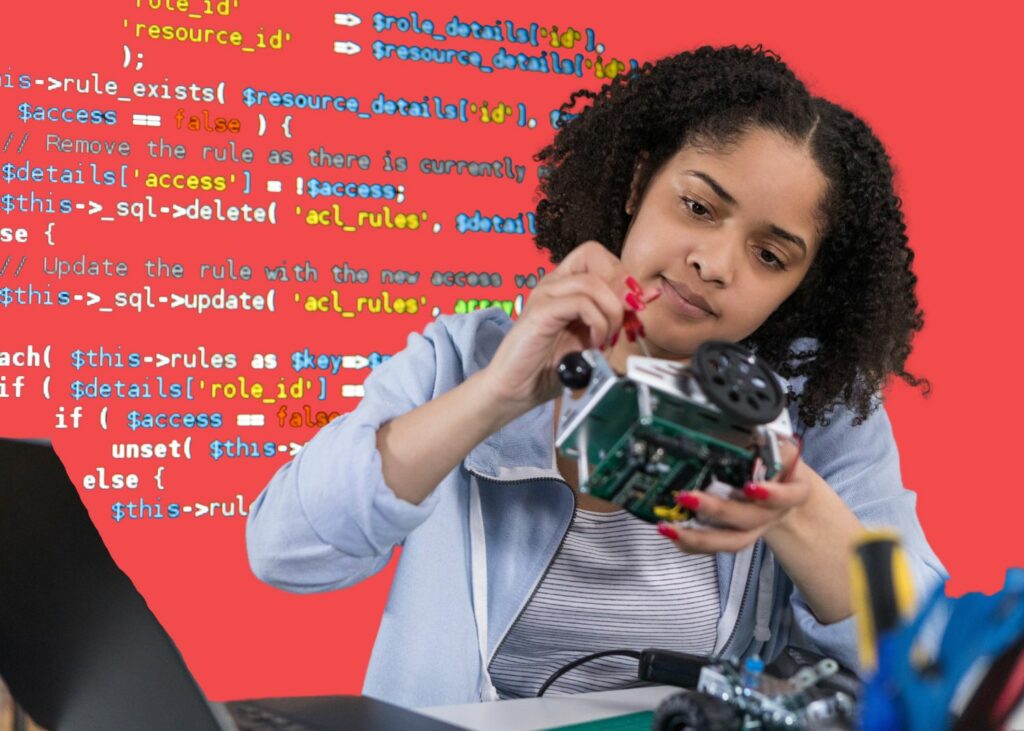
24. American Rocketry Challenge
The American Rocketry Challenge gives U.S. middle and high school students hands-on experience solving engineering problems through the design, build, and launch of model rockets. (There are also competitions for marketing and explaining rocketry.) Teams of 3–10 students (grades 6–12) compete against hundreds of teams nationally for the chance to win $100,000 in prizes. Teams must be supervised by an adult approved by the principal of the school, or by an officially-appointed adult leader of a youth organization. What if you don’t know much about rocketry? The American Rocketry Challenge features a nationwide network of aerospace professionals and rocketry experts from the National Association of Rocketry and the American Institute of Aeronautics and Astronautics (listed on the website!) who are willing and available to mentor your team. These mentors can help with organizing, rocket building, and career pathway exploration.
- Grades: 6, 7, 8, 9, 10, 11, 12
- Focus: Aeronautics, Engineering, Marketing, STEM
- Participation: In Person, Submission
25. Best Robotics Competition
In the Best Robotics Competition, school-based teams of high school students (and middle students) compete against each other to build robots on a real-time basis using a provided “kit” of materials. The robots must navigate obstacles and perform specific tasks (which are kept secret until the day of the competition) on a 24-square-foot field. There are rounds of competitions to determine the winners in 5 categories as well as an overall winner (the best score in all 5 categories).
- Grades: 6, 7, 8, 9, 10, 11, 12
- Focus: Robotics, STEM
- Participation: In Person
26. FIRST Robotics Competition
The FIRST Robotics Competition is an annual program for high school students that challenges teams to design, build, and program industrial-size robots to play a field game in alliance with other teams. Teams must also fundraise, design a team brand and promote STEM in the community. Mentors and volunteers guide each team, and the season culminates in district and regional events and the FIRST Championship. The program welcomes all skill levels and offers opportunities to collaborate, compete, use cutting-edge technology, solve problems, and be exposed to new ideas and scholarships. Events include Kickoff, District and Regional events, the FIRST Championship, and Off-Season events.
- Grades: 9, 10, 11, 12
- Focus: Robotics, STEM
- Participation: In Person
27. Rube Goldberg Machine Contests
The Rube Goldberg Machine Contest® is a STEM competition open to individuals or teams of all ages. It challenges students to make interesting machines out of found or discarded household items. The machines can be any size and must complete a specific task. Students take videos of their machines in action for submission. There are also 2 variations of this contest: The Rube Goldberg Cartoon Contest® (where students draw cartoons of a Rube Goldberg machine) and The Rube Goldberg Minecraft Challenge® (where students in grades 3–12 create a virtual Rube Goldberg machine on Minecraft). Prizes include Visa gift cards, Rube swag, trophies, and being showcased on social media.
- Grades: 6, 7, 8, 9, 10, 11, 12
- Focus: Art, Engineering, Fine Art, Information Technology, STEM
- Participation: Submission
28. TEAMS (Tests of Engineering Aptitude, Mathematics, and Science)
TEAMS is an annual, multilevel (state and national) STEM competition that gives middle and high school students (grades 7–12) the opportunity to work together on a theme-based engineering challenge. Students participate in teams of 2–4 members plus an adult coach. The competition has three components: (1) Design/Build: Using designated materials, teams complete a hands-on design challenge related to the annual competition theme; (2) Multiple Choice: teams answer multiple choice questions on four engineering scenarios related to the annual competition theme; and (3) Essay: each team researches and writes an in-depth essay related to the competition theme (submitted electronically prior to the in-person part of the competition). Teams are split into two divisions: 9th/10th-grade level and 11th/12th-grade level. Students that win at the state level advance to the national TEAMS competition. There is a fee to compete of $150 per team and $100 per additional team registered at the same school.
- Grades: 7, 8, 9, 10, 11, 12
- Focus: Engineering, Essay, STEM, Writing
- Participation: In Person, Submission
29. Zero Robotics Competition
The Zero Robotics Competition is a robotics programming competition run by the Massachusetts Institute of Technology. Student teams remotely program SPHERES satellites inside the International Space Station (ISS) to solve an annual challenge. The competition starts online, and finalists are selected to compete in a live championship where an astronaut conducts the competition aboard the ISS. There are two types of tournaments: the High School Tournament for students in grades 9–12, which takes place from September to December, and the Middle School Summer Program, a 5-week program for younger students. The tournament objectives are to win a technically challenging game by programming the SPHERES satellites to complete game objectives while conserving resources and staying within specified time and code-size limits.
- Grades: 6, 7, 8, 9, 10, 11, 12
- Focus: Robotics, STEM
- Participation: Submission and In Person
Science Innovation Competitions
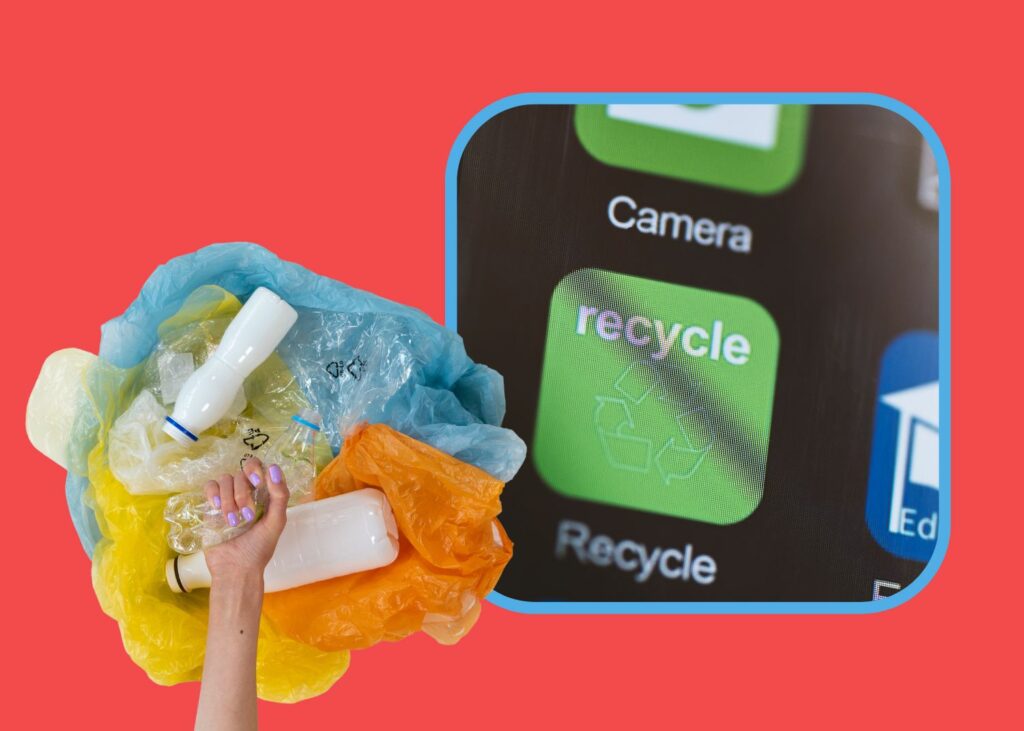
30. Biomimicry Institute: Youth Design Challenge
The Biomimicry Institute: Youth Design Challenge is a team competition for students in middle school (grades 6–8) and high school (grades 9–12). Working with an adult coach, student teams choose an environmental or social problem. The teams then work together to apply biomimicry to address the chosen issue, by studying how organisms in nature have adapted to similar problems and applying that knowledge to create innovative solutions. The final project can be entered into a nationwide competition, where prizes are awarded by the Biomimicry Institute. First, second, and third place award winners as well as honorable mentions are selected in middle school and high school categories, and winning teams have their work featured online. Students don’t need to have experience with biomimicry to participate. The Challenge provides resources and training opportunities, including access to lesson plans, to help the teams and their coaches.
- Grades: 9, 10, 11, 12
- Focus: Biology, STEM
- Participation: Submission
31. Conrad Challenge
The Conrad Challenge is an international competition for students aged 13–18 that encourages them to apply science, technology, and innovation to solve global problems. Participants form teams of 2–5 students and go through four stages: Activation, Lean Canvas, Innovation, and Power Pitch. The competition aims to develop students’ collaboration, creativity, critical thinking, and communication skills. Teams compete for awards and recognition, with the best teams named Pete Conrad Scholars. Competition categories include Aerospace & Aviation, Cyber-Technology & Security, Energy & Environment, Health & Nutrition, Transforming Education Through Technology, and Smoke-Free World. In the final stage, the Innovation Summit, teams present their projects to a panel of expert judges.
- Grades: 7, 8, 9, 10, 11, 12 (ages 13–18)
- Focus: STEM
- Participation: In-Person, Submission
32. Exploravision
Toshiba ExploraVision is a science competition for K-12 students of all interest, skill, and ability levels. Students work in groups of 2–4 guided by a team coach and optional mentor to research a current technology. They explore what the technology does, how it works, and how, when, and why it was invented. The students then try to imagine what that same technology could look like 10 or more years in the future, and determine what scientific breakthroughs need to occur to make it a reality. First prize winners receive $10,000 in US EE savings bonds, second prize winners receive $5,000, national finalists receive a trip to Washington DC for the awards weekend, regional winners receive a Chromebook and awards ceremony, and honorable mentions receive a unique prize and certificate. Coaches of winning teams receive trips, Chromebooks, certificates, and gifts, and schools of regional winners receive technology or science-related gifts.
- Grades: 7, 8, 9, 10, 11, 12
- Focus: STEM, Technology
- Participation: Submission
33. Microsoft Imagine Cup Junior
The Microsoft Imagine Cup Junior is an international competition for students aged 13–18. Participants learn about artificial intelligence, machine learning, and cybersecurity. They then apply these technologies to come up with a concept or idea to make a difference in the world. Teams of 1–6 students are led by a Team Leader (such as a teacher or mentor). Microsoft provides access to Azure for Students (to help teams build prototypes) and Minecraft: Education Edition (for lessons on AI). The competition includes resources like a Beginners Kit, Deep Learning Modules, and a Team Leader Toolkit. Teams submit their projects through a PowerPoint template and a video. The top ten teams receive trophies and prizes.
- Grades: 6, 7, 8, 9, 10, 11, 12 (ages 13–18)
- Focus: Computer Science, STEM, Technology
- Participation: Submission
34. Samsung Solve for Tomorrow
Samsung Solve for Tomorrow is a $2 million national technology competition for public schools grades 6–12. Teams of students work with a teacher-advisor to create and showcase a project that uses STEM skills to come up with innovative solutions to real-world issues in their local communities. Students can win up to $100,000 in prizes for their school, plus the opportunity to work with Samsung employees to develop their prototypes.
- Grades: 6, 7, 8, 9, 10, 11, 12
- Focus: STEM
- Participation: Submission
35. Spellman Clean Tech Competition
The Spellman Clean Tech Competition is a global research and design challenge for high school students between the ages of 15–18. Students identify an environmental or resource issue they want to change and design a sustainable solution using clean technology. In the first round of the competition, teams must submit an electronic paper outlining the problem they have identified and proposing a clean technology solution. The top 30 teams are selected as semifinalists, and the top 10 are named as finalists and invited to the second round of the competition. In the second round, finalists create a prototype of their solution using a $200 stipend and participate in a live judging event. There are 10 cash prizes ranging from $1,000 to $7,000, and the first-place team receives continued mentorship to develop their winning idea.
- Grades: 9, 10, 11, 12
- Focus: Engineering, STEM
- Participation: In-Person, Submission
Hey, there – you made it to the BONUS Competition!
As promised, because you stuck with us to the end of this list, we’re letting you in on a really cool and fun competition that we came across. This competition is a bit “non-traditional” and falls somewhere between Science Application and Science Innovation competitions (and is less intense than the Biomimicry Institute Youth Design Challenge), but it’s just so awesome that we wanted to highlight it. The competition ran in 2022 and they’re bringing it back for 2023, so start designing NOW!!
36. The Natural Robotics Contest
The Natural Robotics Contest is an opportunity for anyone to have their idea for a bioinspired robot turned into a reality. If you’ve ever watched an animal (or plant!) do something cool and thought “Why can’t we do it that way?”, this is the competition for you. A team of robotics researchers (affiliated with some major European universities) is hosting a design competition for students all over the world to submit their ideas for robots inspired by nature. The key to winning is to let your imagination run wild (pun intended)! If you watch the video below, you’ll see that the “designs” don’t have to be complex blueprints or schematics — these researchers are just looking for a great idea and a basic description and drawing that explains it. There’s no cash prize, but the best ideas will be posted on their website and the researchers will make a working model of the winning design! How awesome is that?!
- Grades: 6, 7, 8, 9, 10, 11, 12
- Focus: Art, Design, Engineering, Robotics, STEM
- Participation: Submission
Want to See More? Check Out the Lateenz Teen Resources catalog of High School Internships, Programs, Competitions, and Scholarships
This is just a small sample of the many competitions you can find in our database. And, even if you’re not interested in competing, there are many programs and internships that offer more great opportunities in STEM and other areas! Be sure to check them out!
Related articles
-
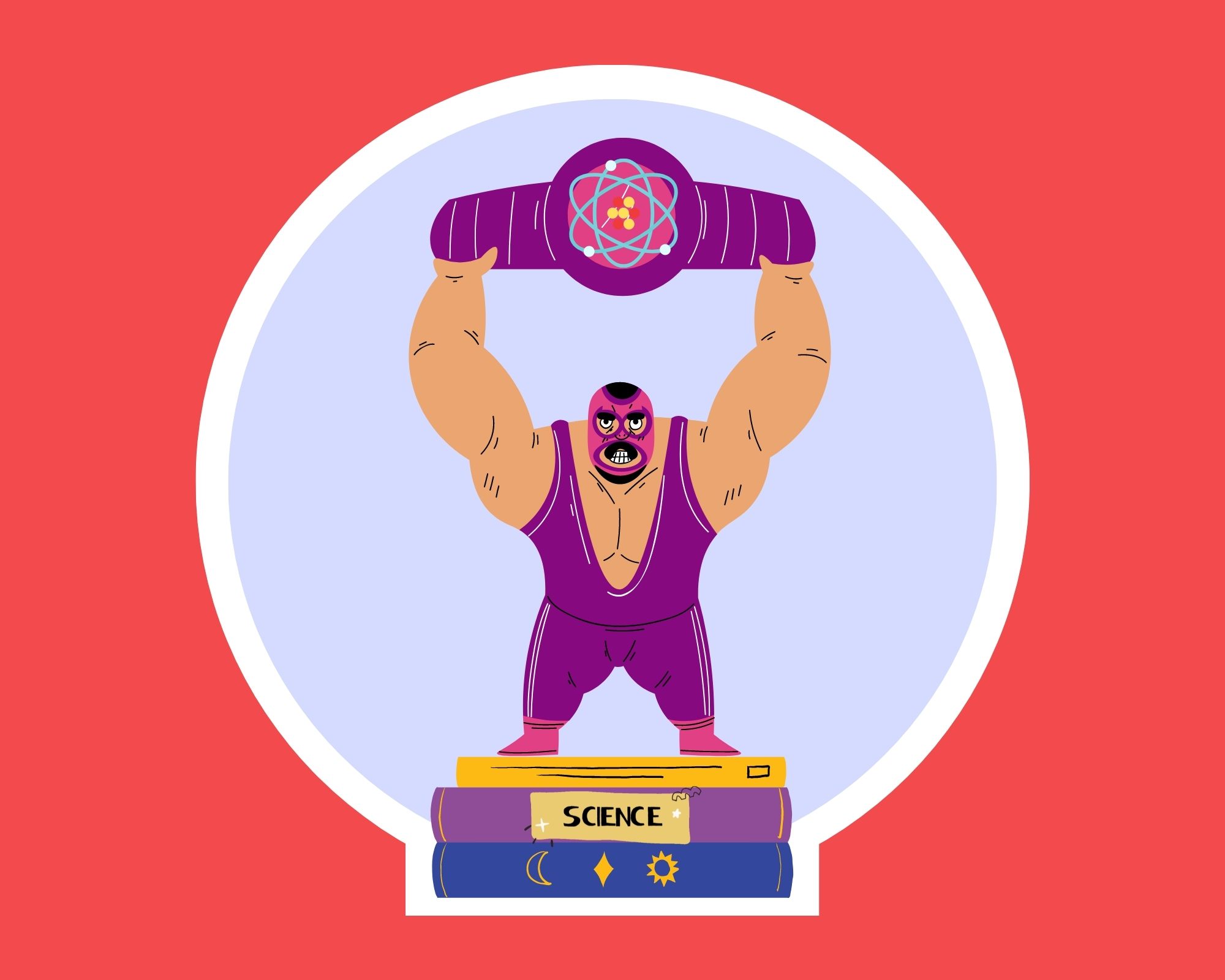 Student LifeHigh School Science Competitions: How to Enter and WinNovember 09
Student LifeHigh School Science Competitions: How to Enter and WinNovember 09 -
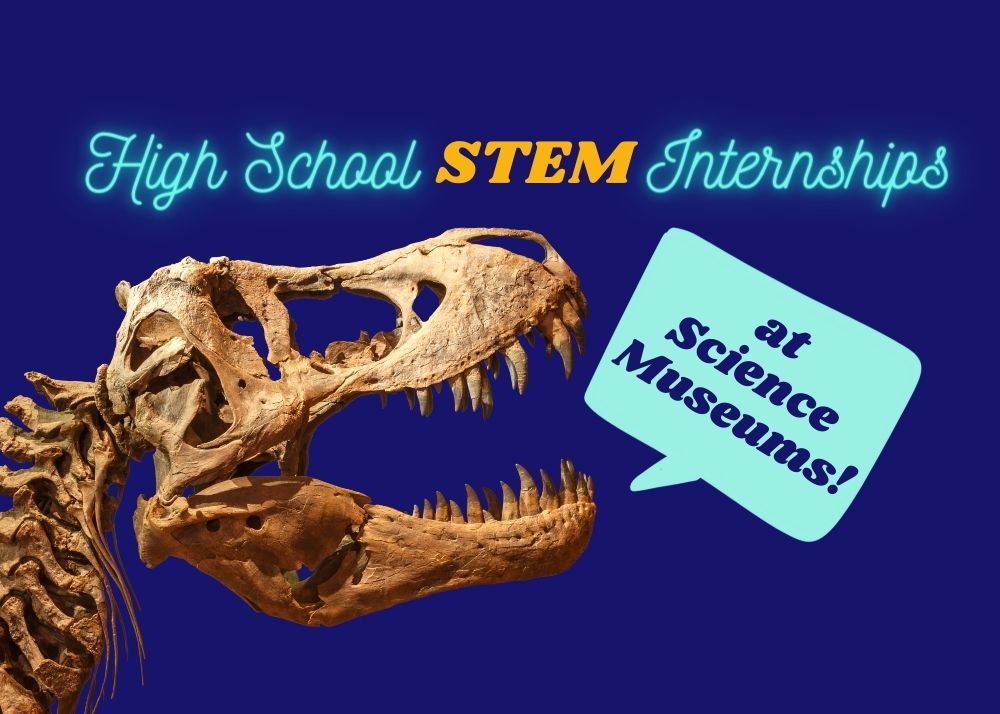 Student LifeSTEM Internships for High School Students at Science MuseumsJanuary 06
Student LifeSTEM Internships for High School Students at Science MuseumsJanuary 06 -
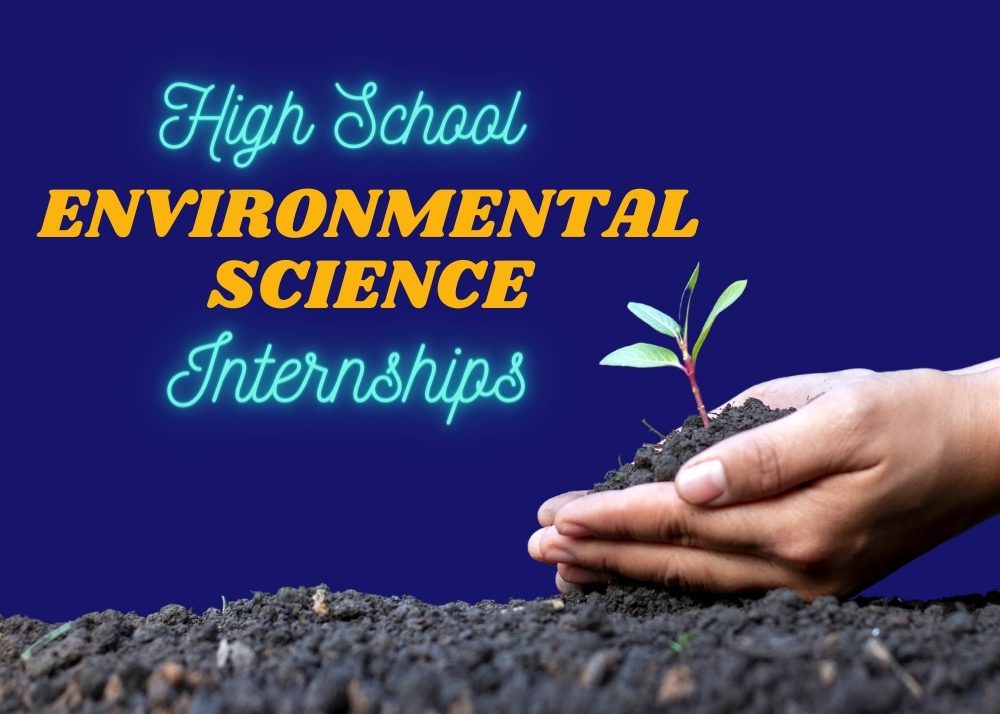 Student Life45+ Exciting Environmental Science Internships for High School StudentsOctober 18
Student Life45+ Exciting Environmental Science Internships for High School StudentsOctober 18 -
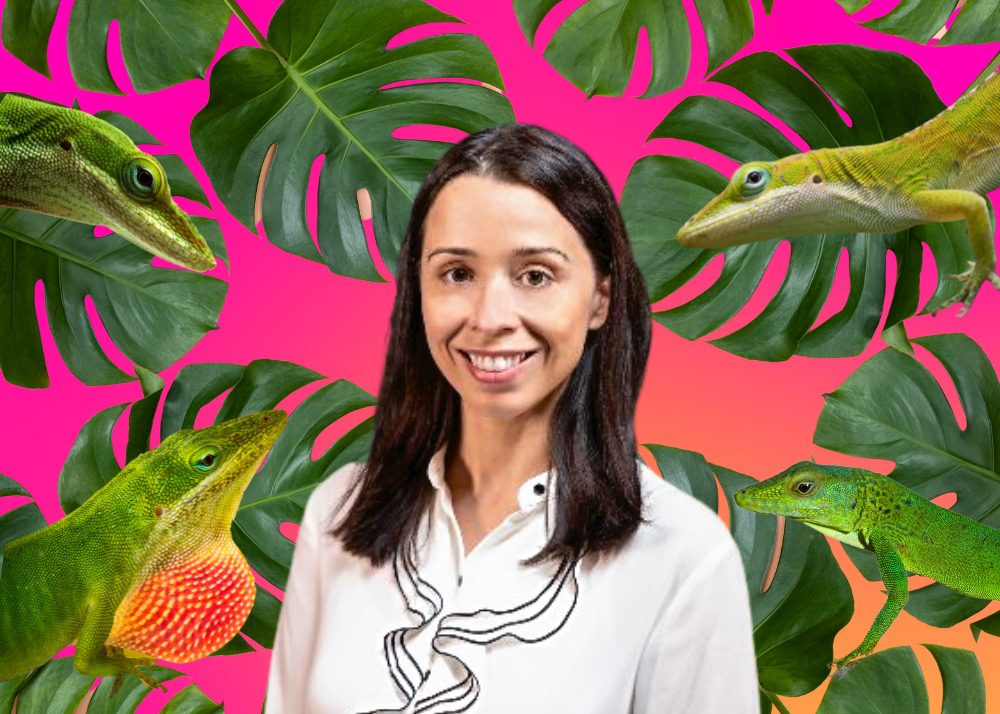 Info / InspirationInterview: The Evolution of Martha MuñozDecember 14
Info / InspirationInterview: The Evolution of Martha MuñozDecember 14 -
 Student LifeUltimate Guide to Middle and High School CompetitionsOctober 26
Student LifeUltimate Guide to Middle and High School CompetitionsOctober 26
Most popular
-
 Info / InspirationVoto Para La Mujer Quarter is a Major “Change”!July 29
Info / InspirationVoto Para La Mujer Quarter is a Major “Change”!July 29 -
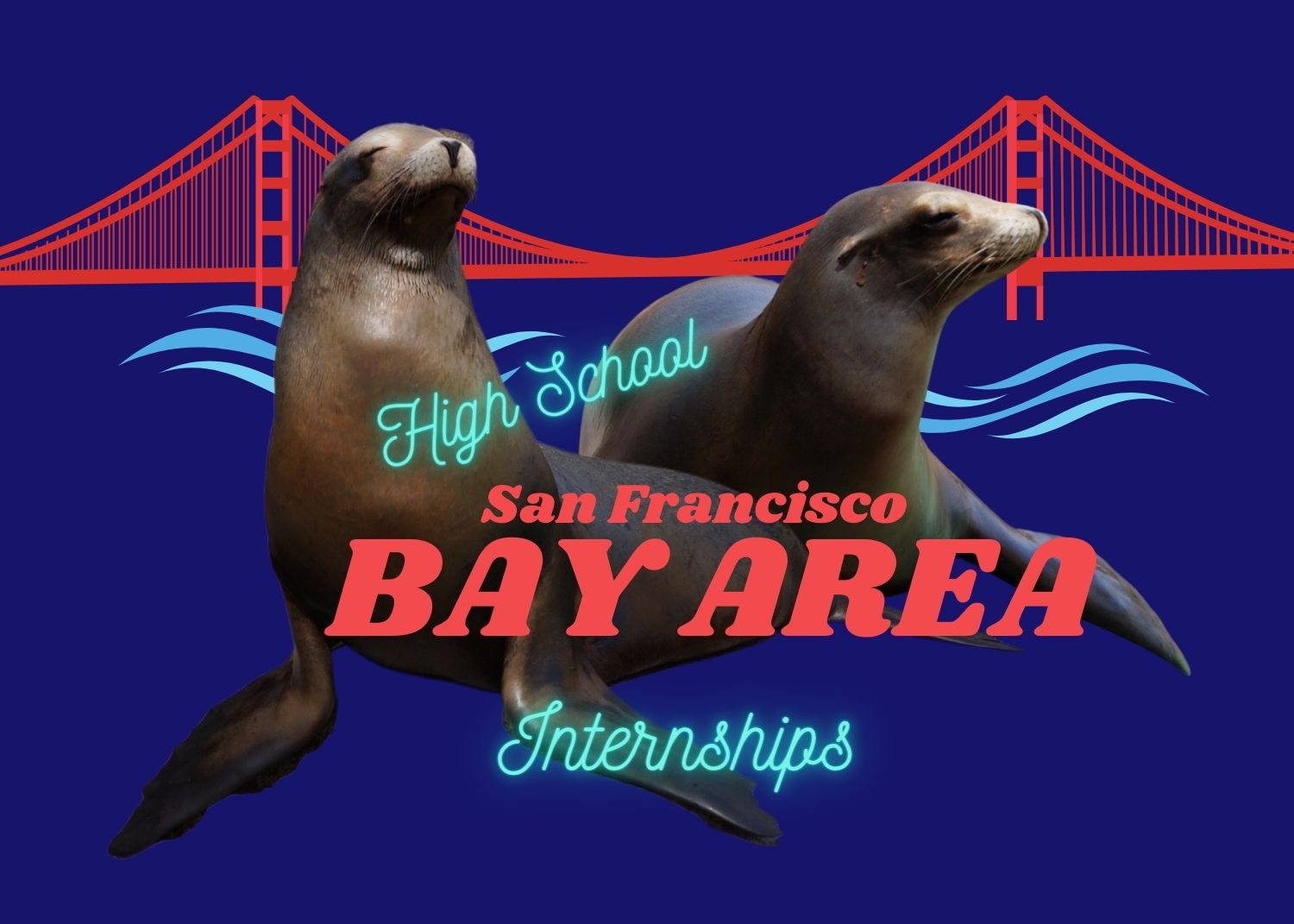 Student Life35+ High School Internships in the Bay AreaJanuary 22
Student Life35+ High School Internships in the Bay AreaJanuary 22 -
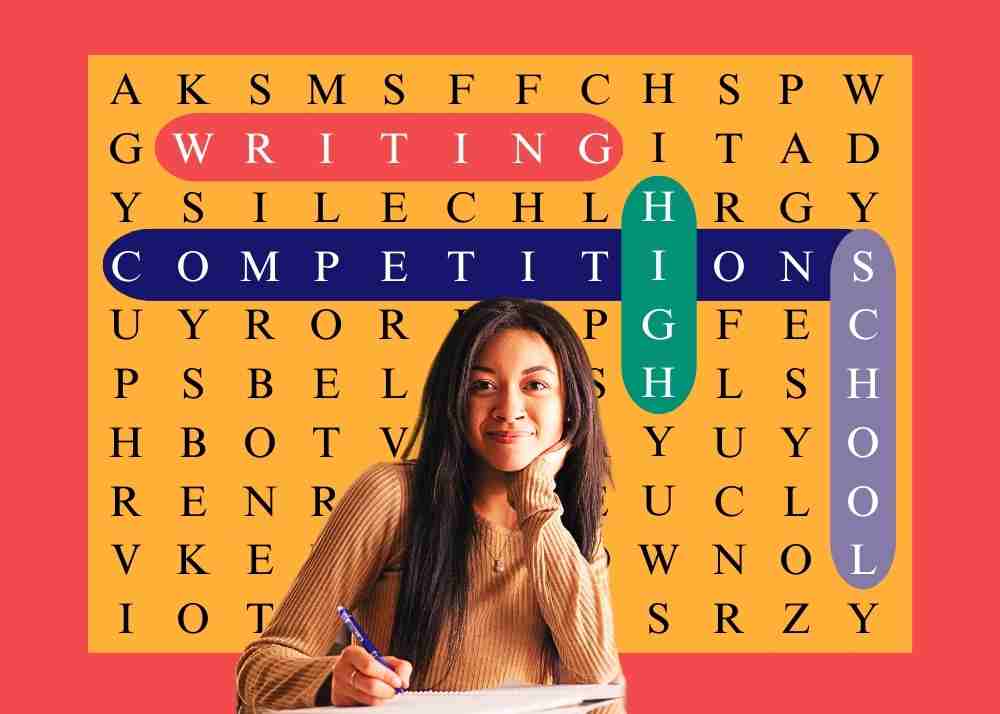 Student Life90+ Best Writing Competitions for High School StudentsApril 13
Student Life90+ Best Writing Competitions for High School StudentsApril 13 -
 Student Life45+ Exciting Environmental Science Internships for High School StudentsOctober 18
Student Life45+ Exciting Environmental Science Internships for High School StudentsOctober 18 -
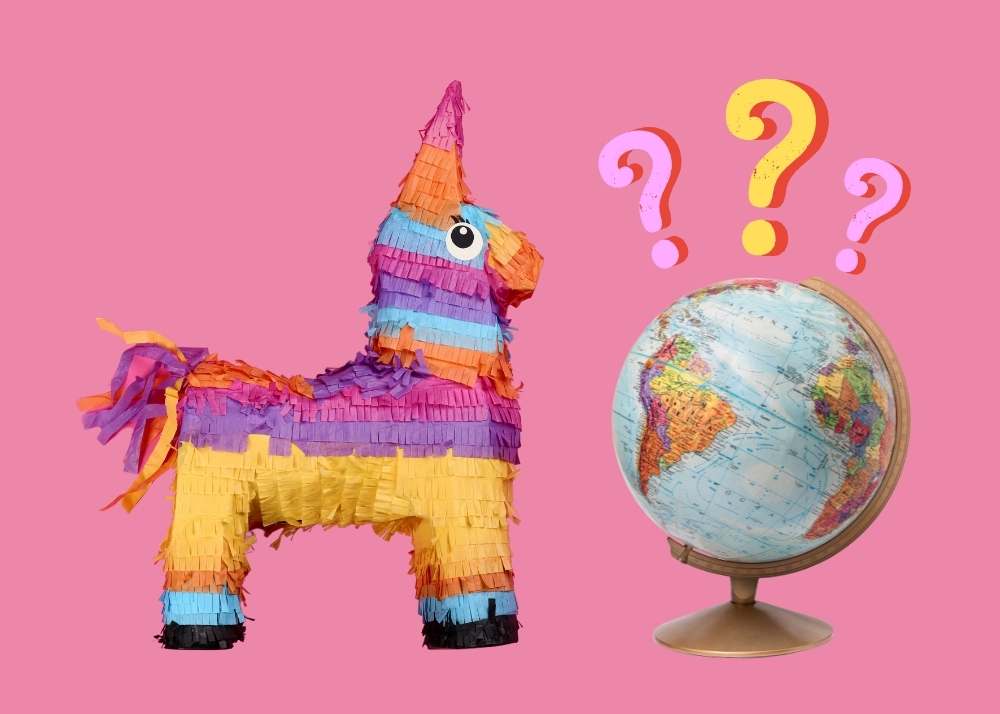 CultureA Smashing Success: The Surprising History of the Piñata in Latino/x CultureSeptember 27
CultureA Smashing Success: The Surprising History of the Piñata in Latino/x CultureSeptember 27

